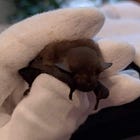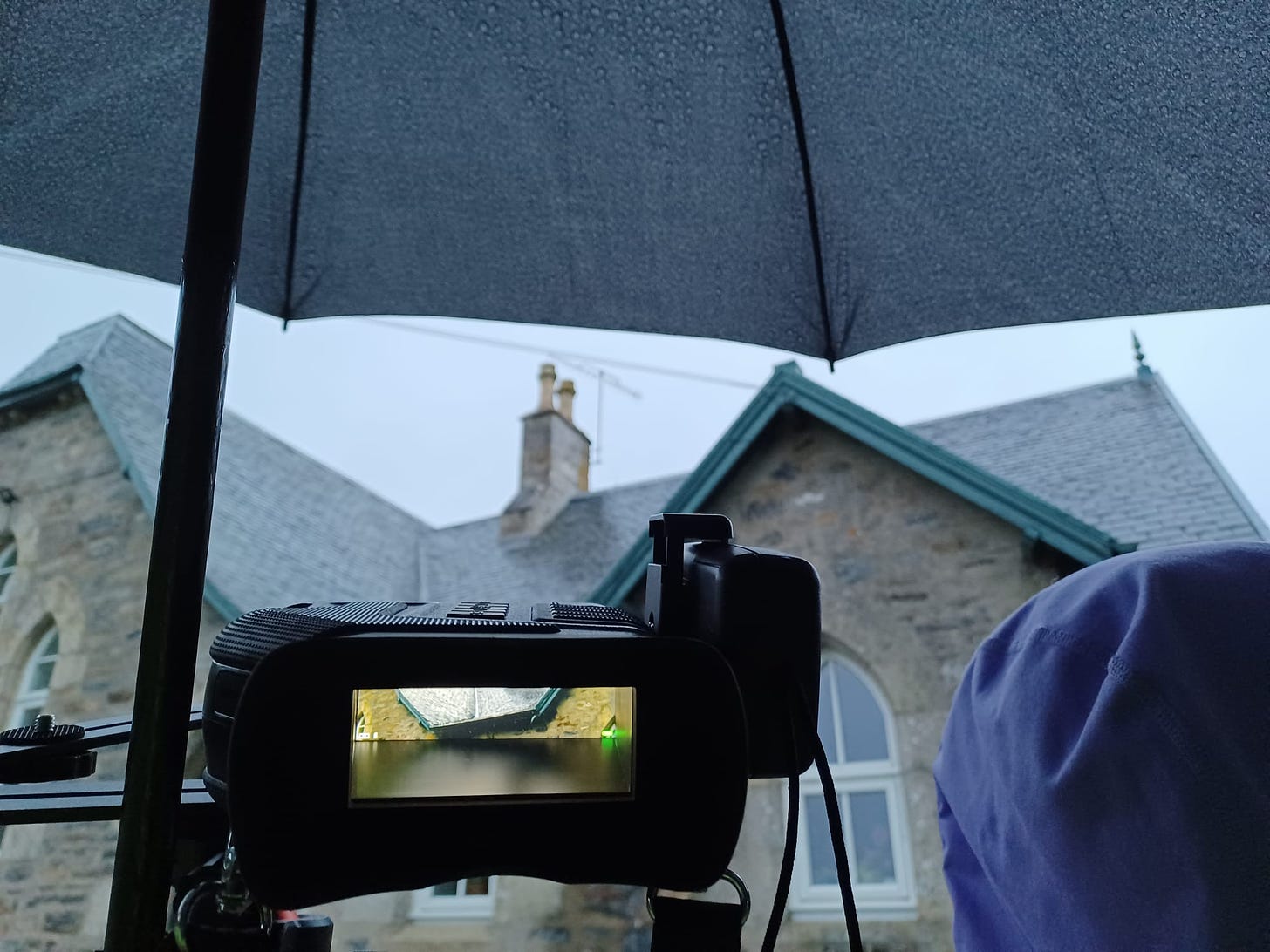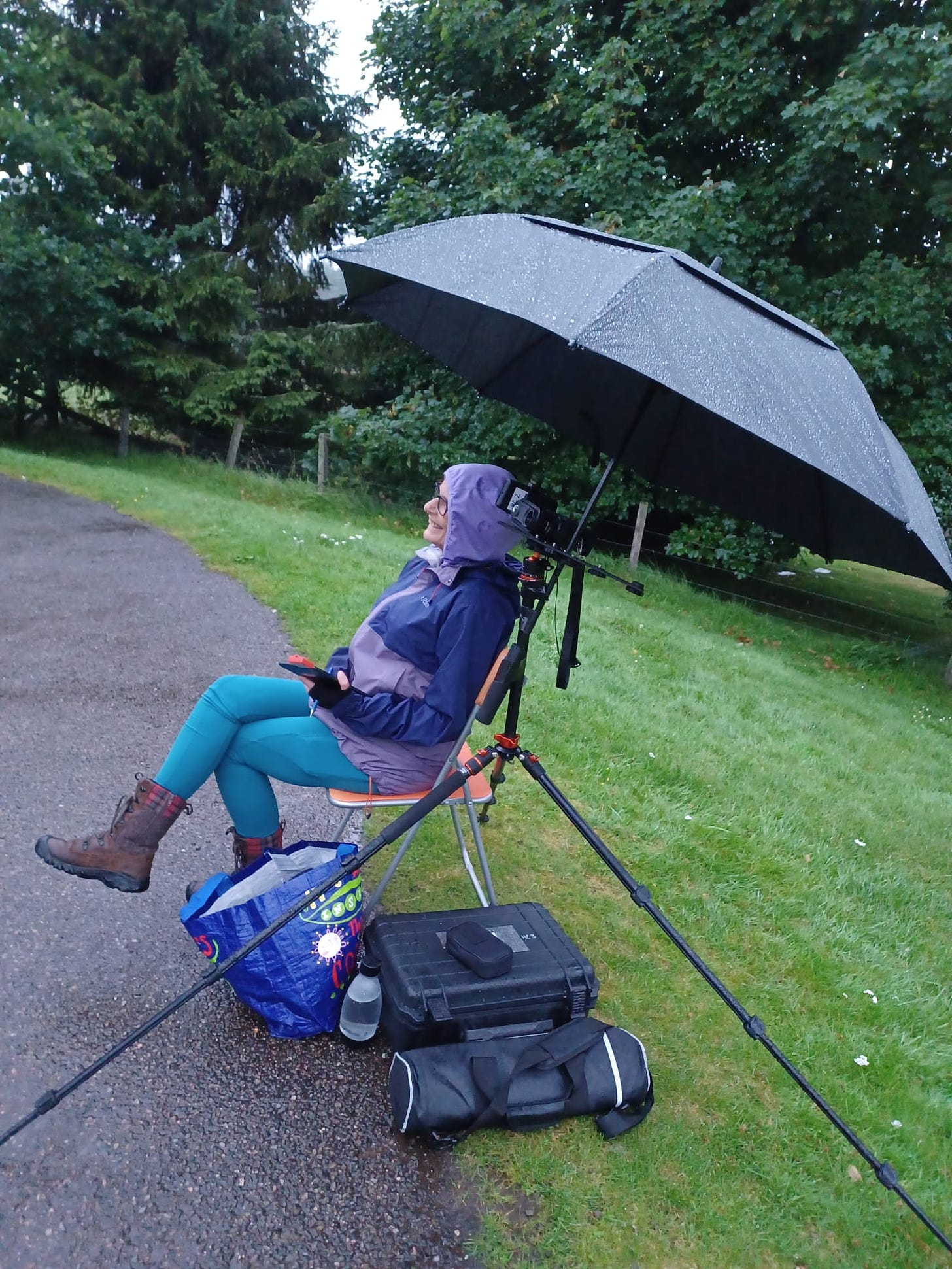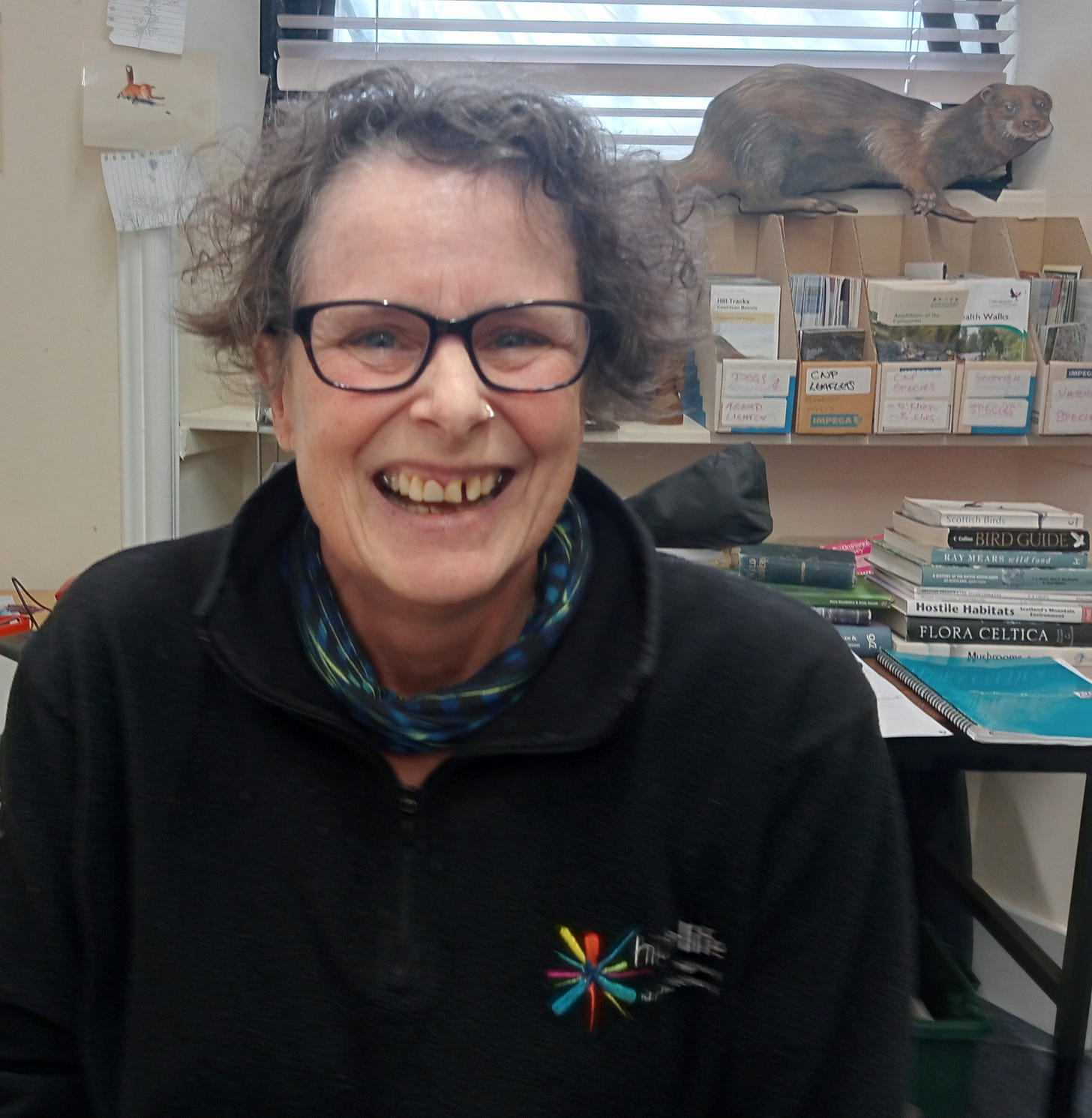A 'Dream Team' Bat Survey
Saranne joins forces with some old colleagues to survey a school roost

Bats have been in the news a lot recently, and indeed within our team we’ve had quite a lot of dramatic bat rescues, including that of Raspberry. Heading towards the back end of August, teenage bats are quite active, but don’t yet have all their proprioception sorted, so can still end up in all sorts of un-ideal circumstances.
My drama (or lack of drama), however, was all about bat roosts but from a different perspective this time - that of a surveyor. Katy Martin, the Ecology Officer for the Highland Council had received a call from an electrician about to lay some cabling in the loft of a Badenoch & Strathspey primary school. He’d found a HUGE maternity colony of bats in the attic space and knew fine he shouldn’t go anywhere near them as they are some of the most protected species in the UK, and he did the right thing and called it in to the Ecology Team.
When Katy got to take a look – which involved entering some dank, dusty, spiderwebbed creepy loft areas (brave woman), she discovered a large brown long eared bat (Plecotus auritus) roost and signs (droppings) of pipistrelle bats (probably both common and soprano, but unable to tell 100% from their poop).
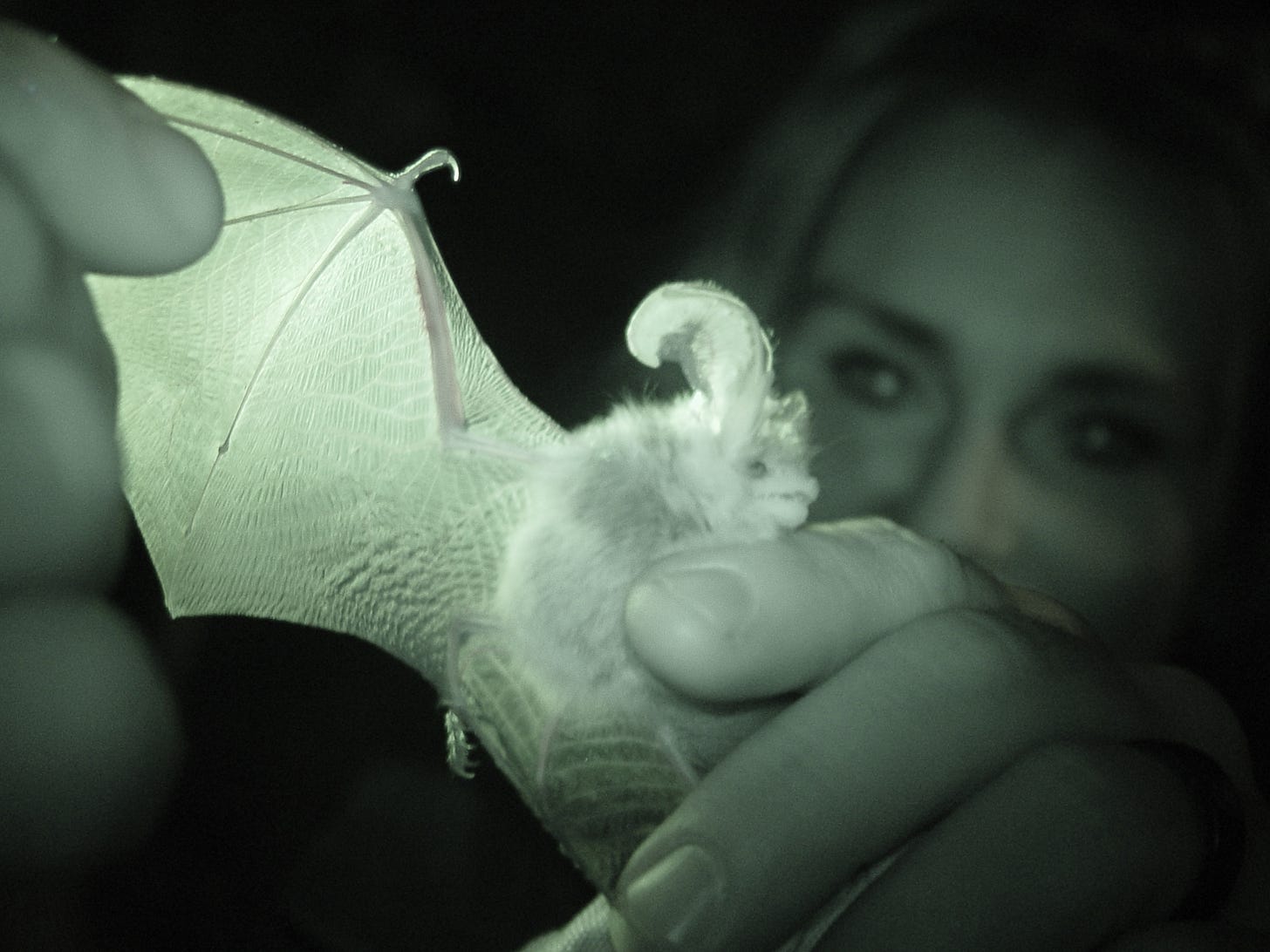
The schools were due back in two weeks at that point and a proper bat survey was going to be required (so a licence for the electrical works to be completed could be issued) and as soon as possible. Hence the old ‘Dream Team’ being reassembled at short notice.
Both Duncan Macdonald (now a Cairngorms National Park Countryside Ranger) and myself (now a High Life Highland Countryside Ranger) were in the old Inverness, Nairn, Badenoch and Strathspey Ranger team and Katy had been our Senior Ranger when the service sat within Highland Council many years ago. We’ve all kept in touch – so when Katy needed an emergency team to tackle the bat survey we were among the trusted people she contacted, and luckily, both of us were available.
So, last Monday evening we all gathered (including Katie Patterson from Highland Council’s Dev & Travel team) in the gloomy damp of a typical Highland summer’s evening. After reacquainting ourselves with some banter and catch up, we were allocated viewing spots of the complex roof.
At each spot we had a thermal imaging recording camera and bat detector protected from the increasing rain with a sturdy umbrella. And a chair and flask of tea each, obviously!
To do an evening bat roost survey, everybody needs to be in position and ready by dusk/sundown to record the number and species of bats, but also their entrance/exit spots on the building. Experience and research tells us that they are likely to use specific areas, such as where the roof tiles meet the ridge tiles at the roof apex and at any ‘junctions’ where the slates may be loose creating a small gap. Bats only need a very small space to enter their roost as they are SO tiny (and in my opinion also very cute).
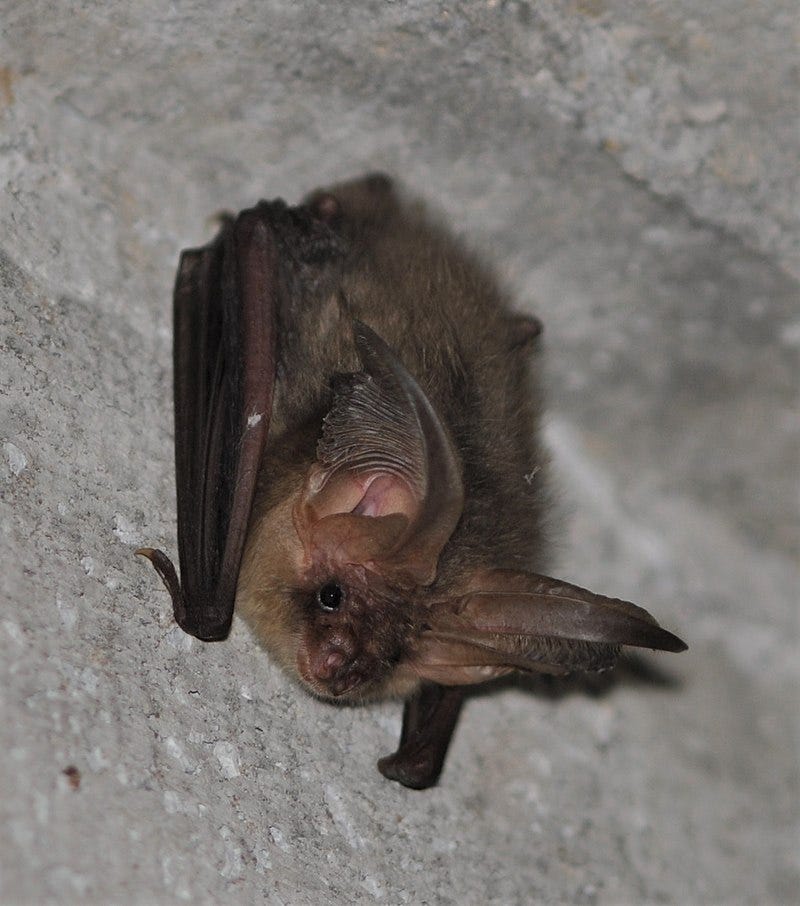
So……covering ourselves in Smidge to ward away biting insects we bravely abandoned the midge nets (because you can’t see through them at dusk) and settled down to watch the school roof for any signs of bats…..in the rain.
Am I selling this ativity to you yet?
We waited…. and we waited…and we waited a bit more.
Then an excited cry from Katy – a pipistrelle!
But only one… so we continued to wait……and wait…..and wait some more.
Ultimately we were forced to give up. That lone pipistrelle must’ve been the scout, who alerted the others that it was raining and folk were watching and so prevented any bats from emerging from their warm cosy roost for us to see and record, that evening.
So reluctantly we called it a day (or evening) and went home to dry off and warm up.
It has been a really unexpected pleasure to join forces with the old team again on this survey, and of course we will be back…that survey still needs doing!
Shape the Future of Highland’s Biodiversity: Have Your Say on the Ecology Strategy
High Life Highland Rangers work closely with The Highland Council playing a key to fulfil statutory biodiversity obligations.
The Council’s Ecology Strategy and Action Plan, now open for public consultation.
This plan addresses the urgent ecological emergency, aiming for a nature-positive Highland by 2030 and restoring biodiversity by 2045. Public feedback is crucial to ensure the strategy meets community needs and expectations. Communities are vital partners in this effort, working together with the Council to protect and enhance the natural environment, and the species that share the spaces with us.
Share your thoughts on the strategy by participating in the consultation before 30 September 2024.
Click the Have your Say link to participate:
Saranne Bish is a consummate communicator and empathetic High Life Higland Ranger, with a life devoted to environmental stewardship. Her transition in 2002 from Ecological Surveying to Countryside Ranger for Nairn, Badenoch, and Strathspey marked a significant shift in her career. Saranne excels in educating and engaging with diverse audiences about the natural world, blending scientific knowledge with a warm, accessible approach. Her passion for conservation is matched by her skill in inspiring others, fostering a collective commitment to protecting our planet's fragile ecosystems. Her ability to connect with people and nature alike makes her a true advocate for the environment.



